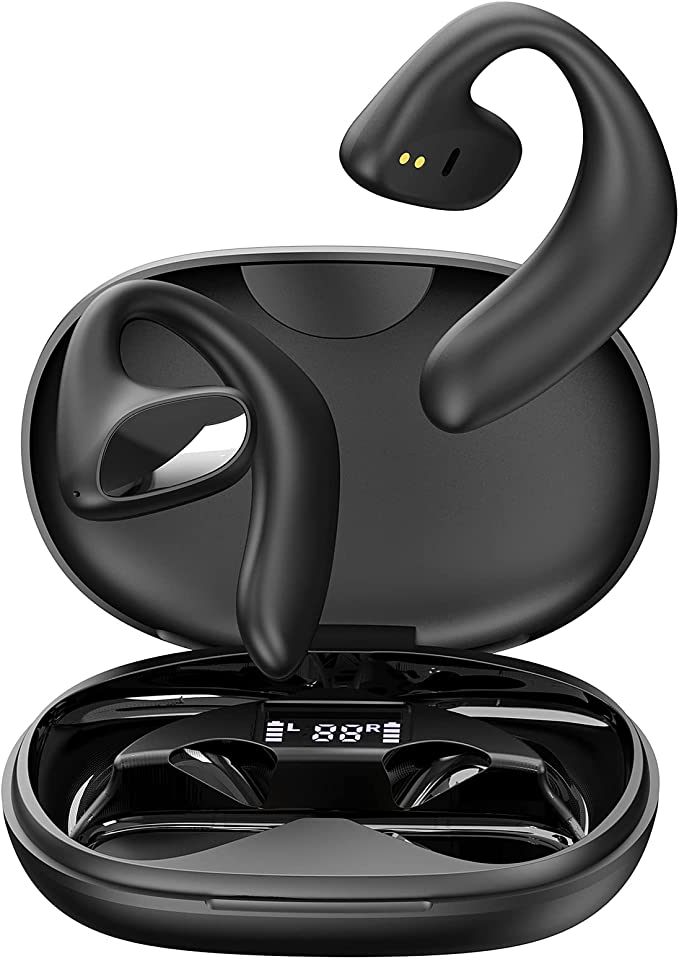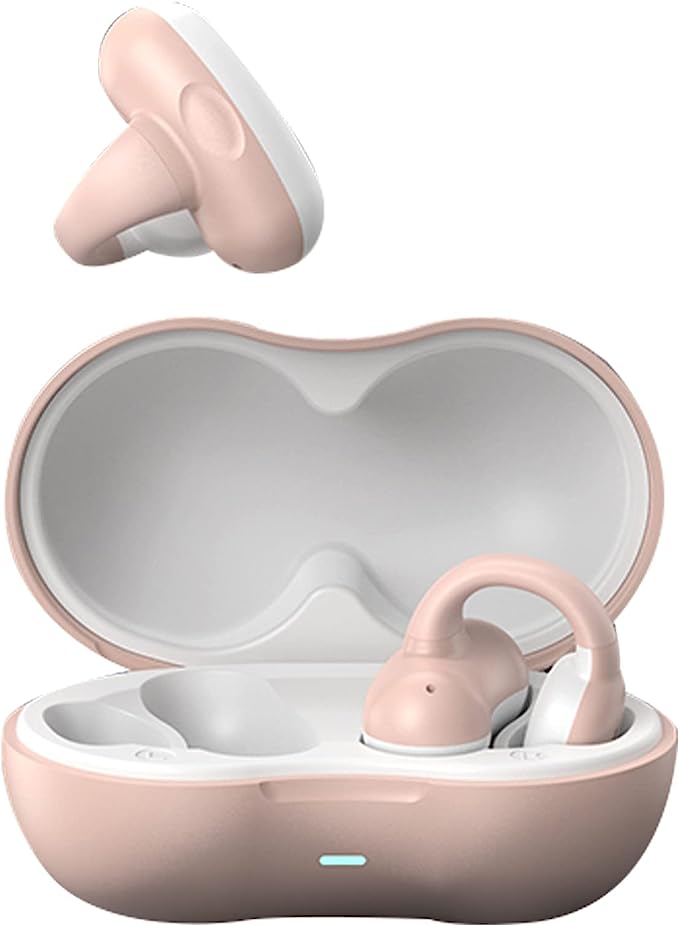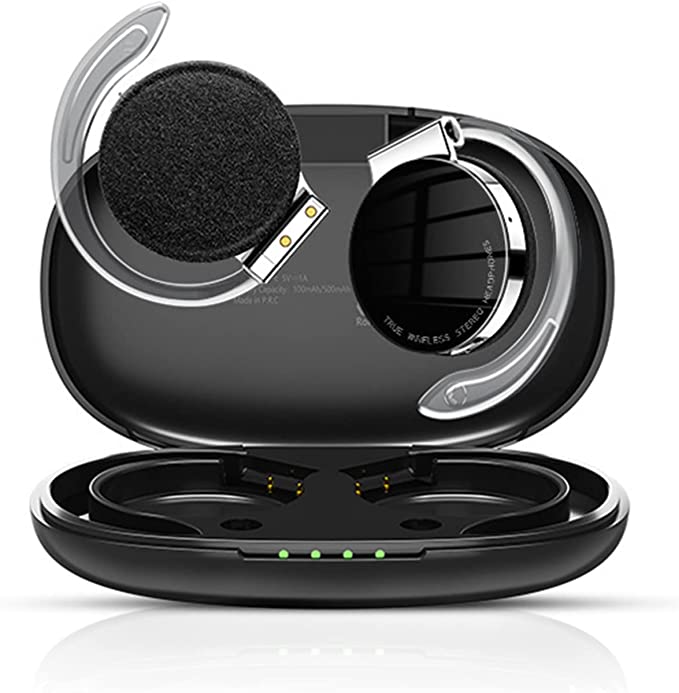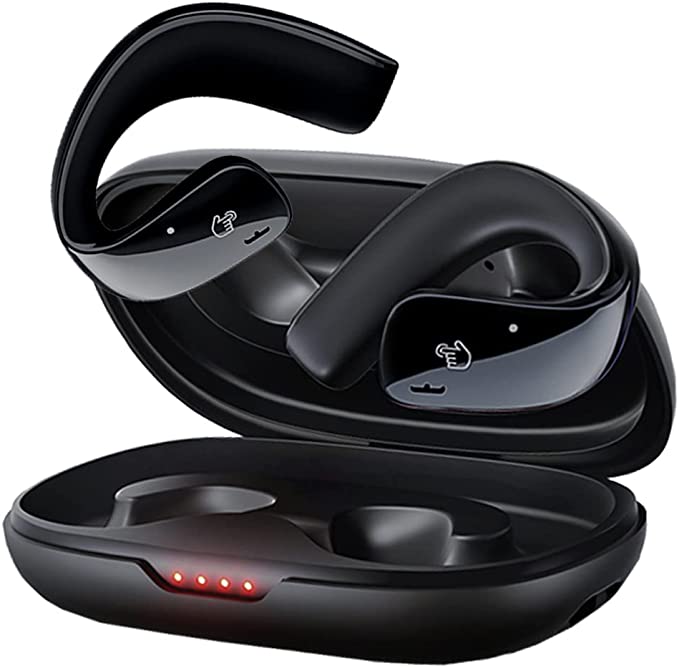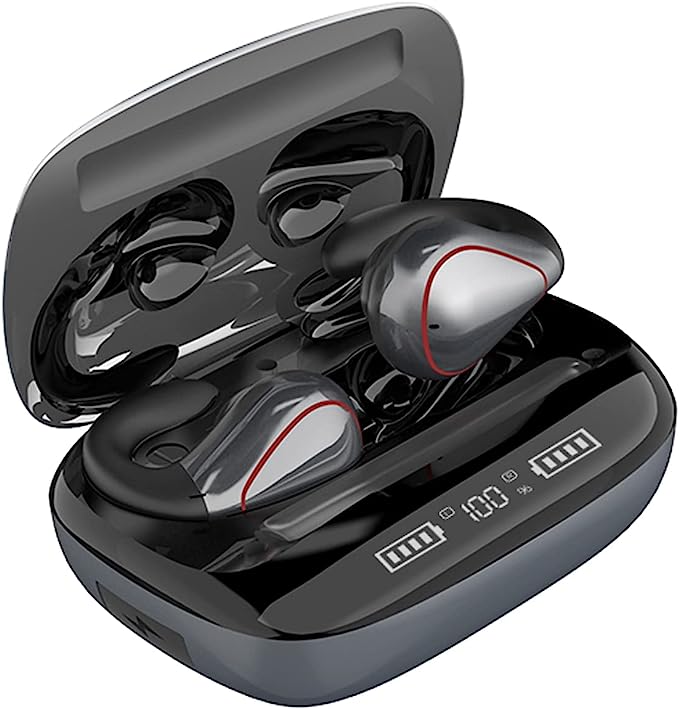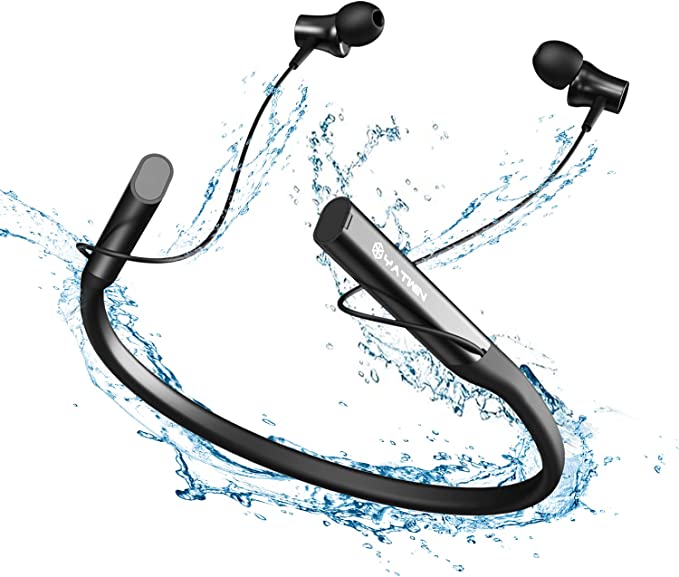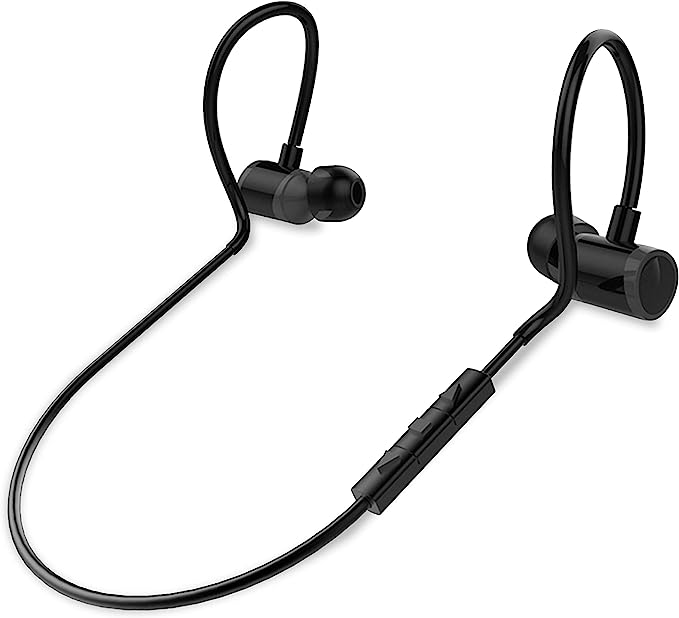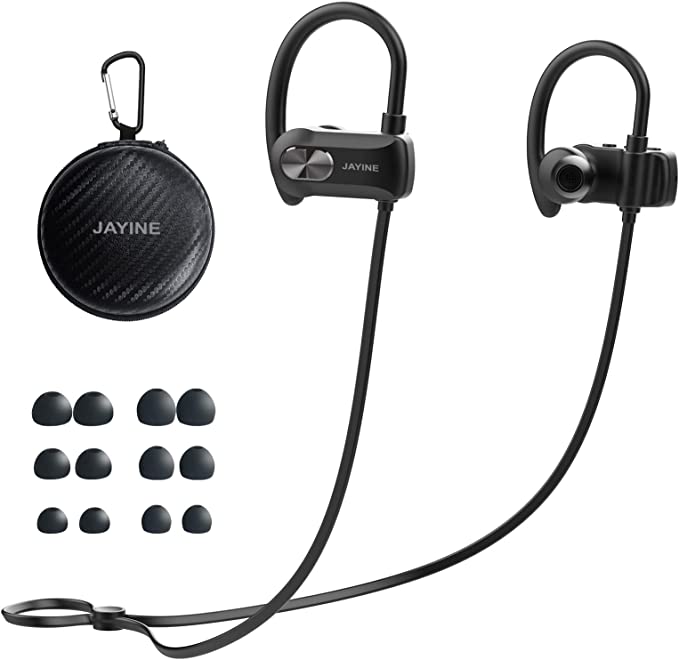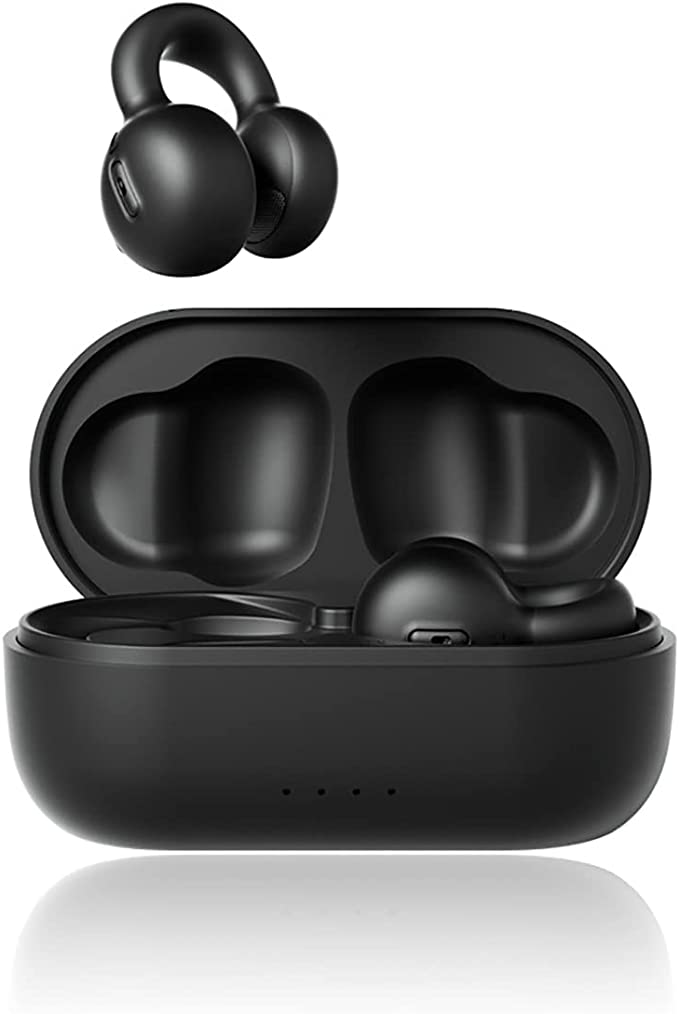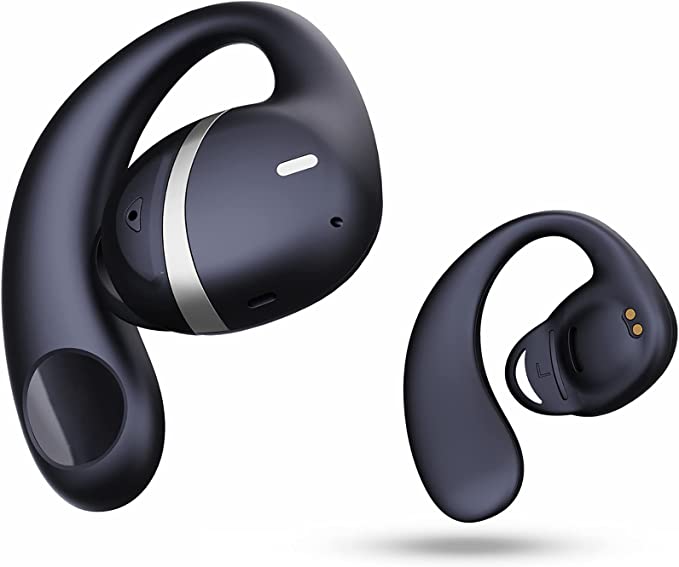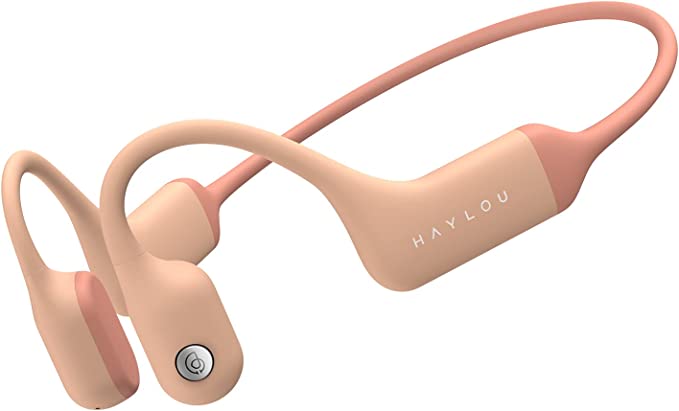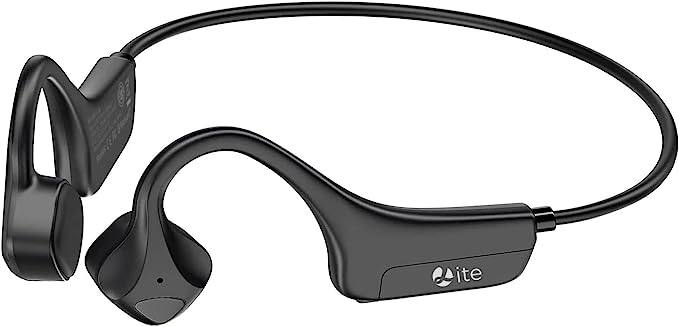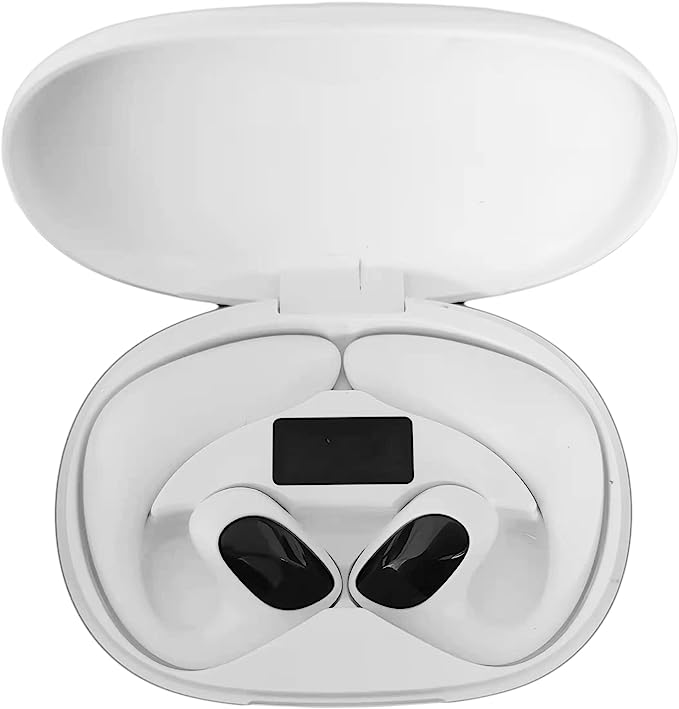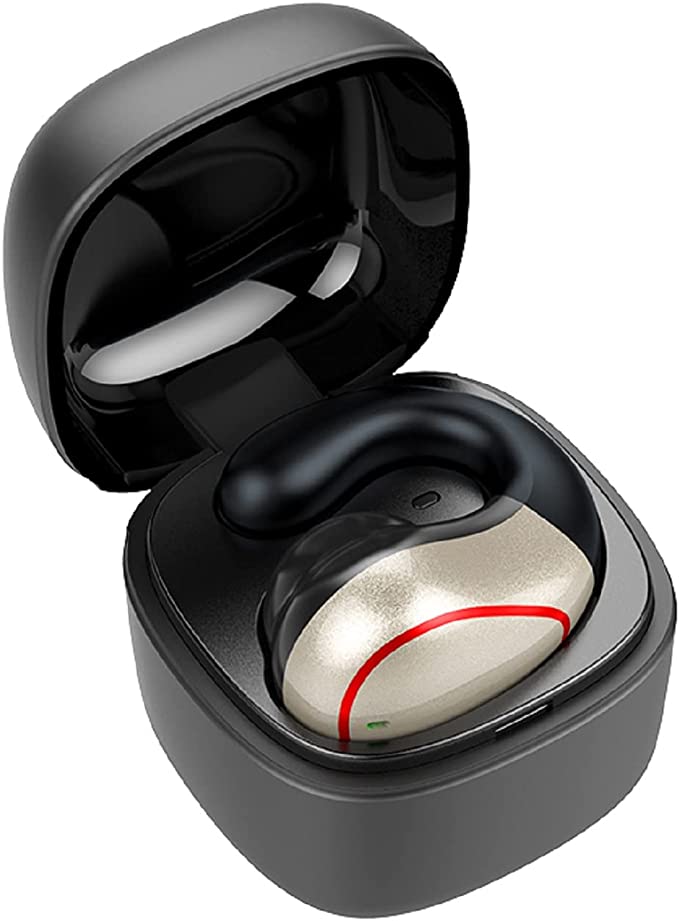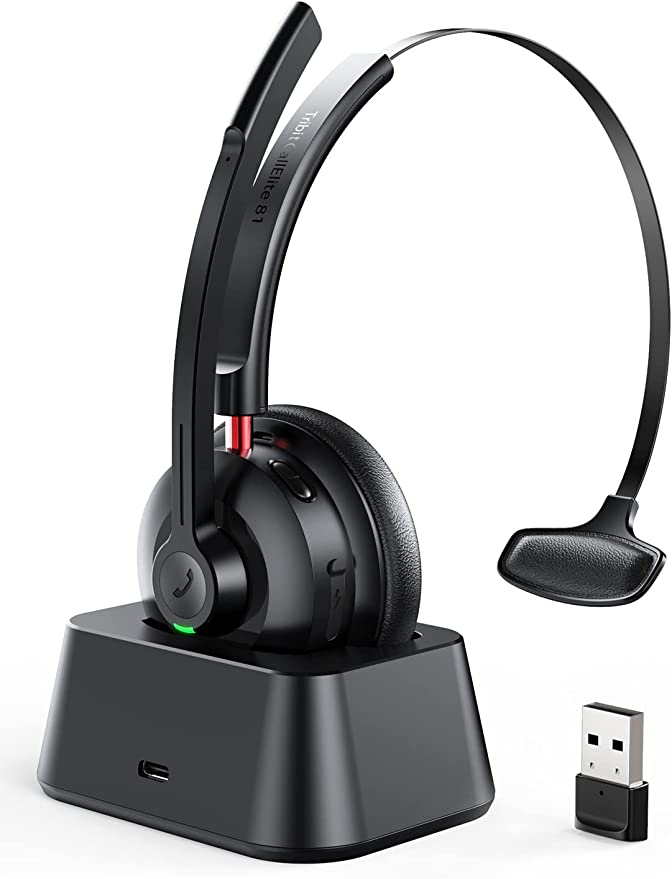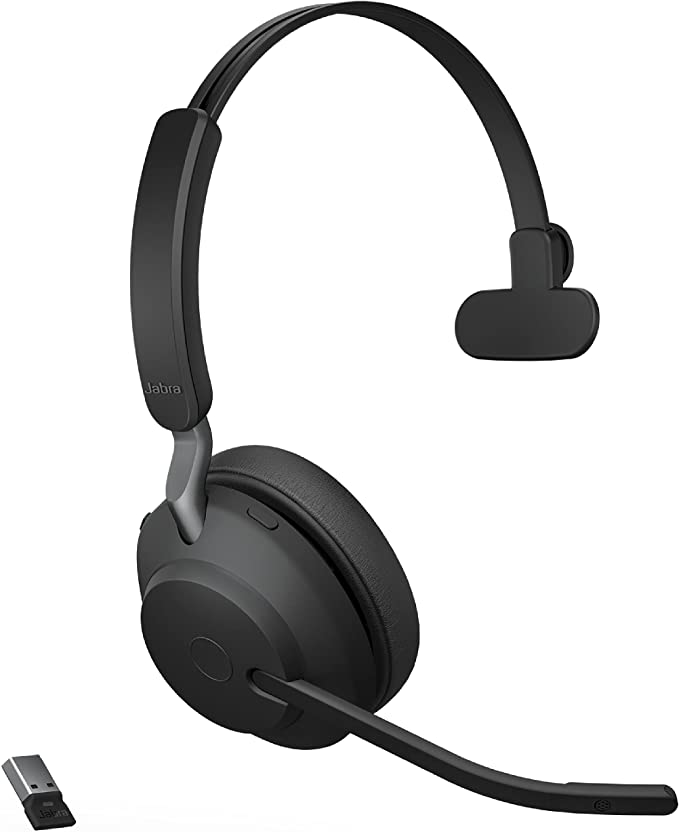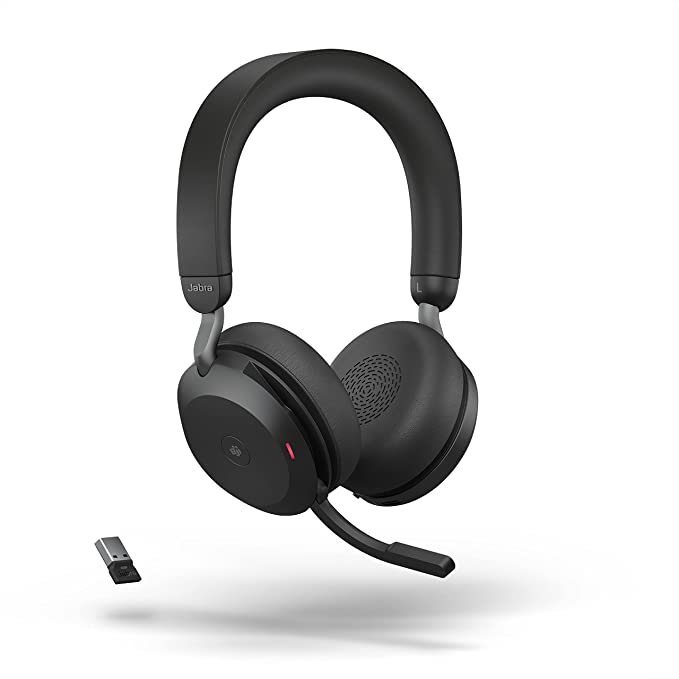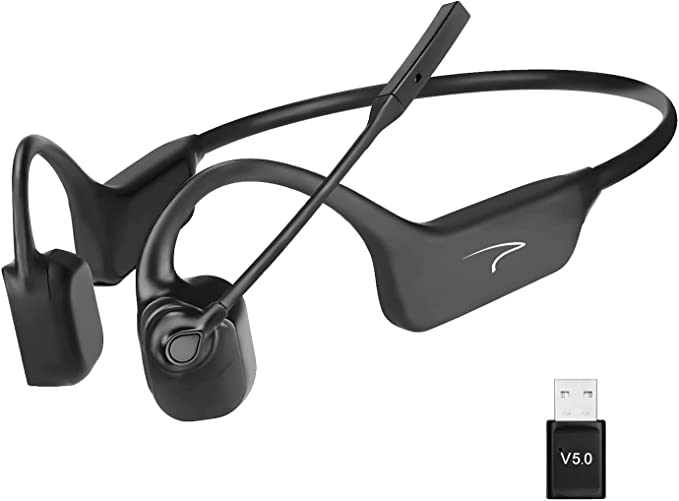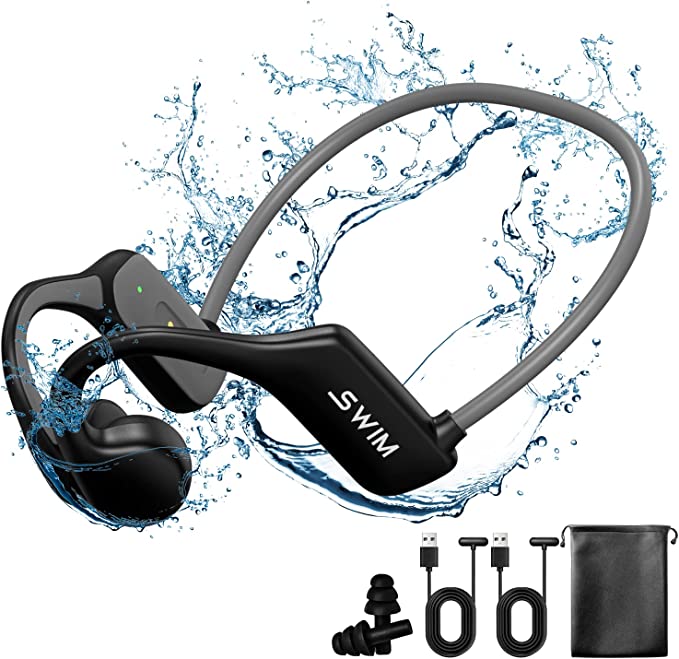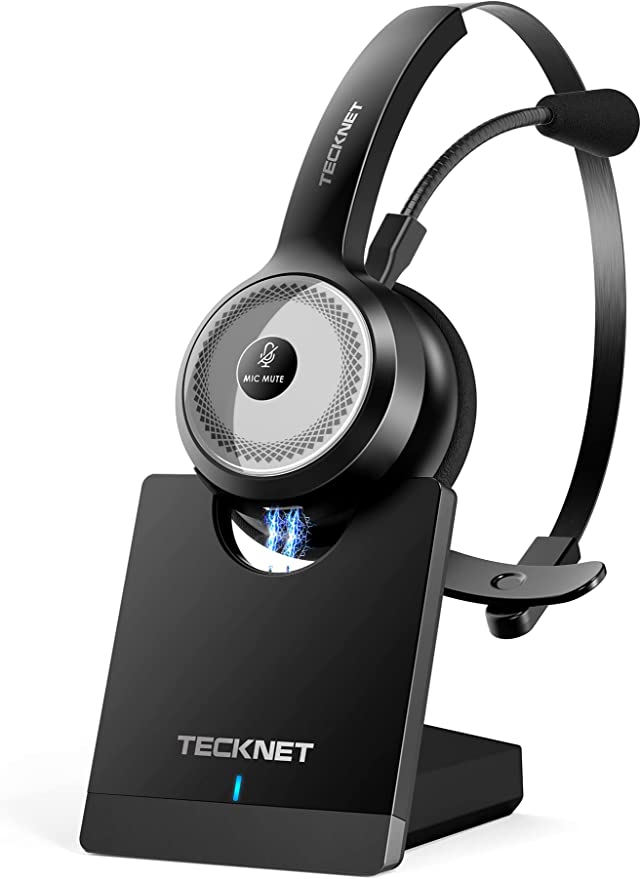Xmenha Wireless Ear Hanging Bluetooth Headset: Open-Ear Audio for Sports and Safety
Update on March 21, 2025, 7:38 a.m.
Headphones have become ubiquitous in modern life, serving as our personal sound systems for music, podcasts, calls, and more. But the traditional approach to headphone design – sealing off the ear canal with earbuds or covering the ears entirely – presents inherent limitations. Enter open-ear headphones, a growing trend in audio technology that offers a fundamentally different way to experience sound, prioritizing both audio quality and your connection to the world around you. This isn’t just a new type of headphone; it’s a new way of listening.
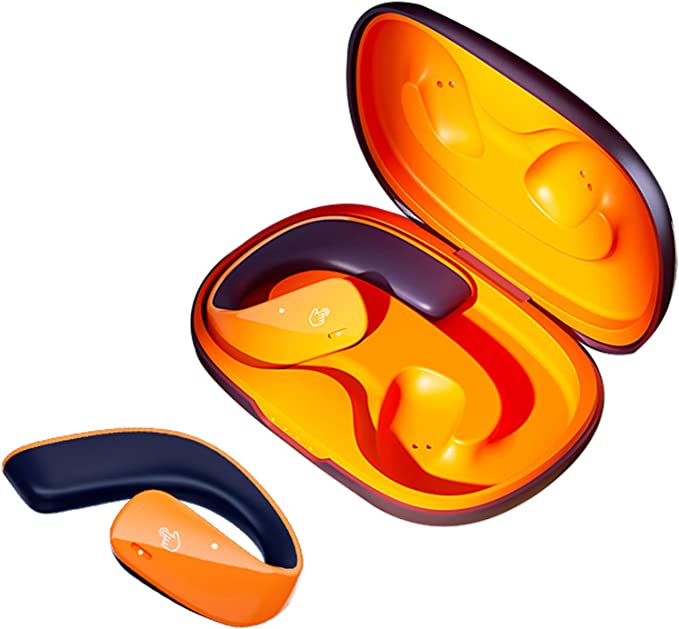
The Sound of Science: How We Hear
Before diving into the specifics of open-ear technology, let’s take a moment to appreciate the marvel of human hearing. Sound, in its essence, is vibration. When an object vibrates, it creates pressure waves that travel through the air. These waves, commonly called sound waves, reach our ears, where a remarkable process unfolds.
The outer ear, the visible part, acts like a funnel, collecting these sound waves and directing them into the ear canal. The waves then strike the eardrum, a thin membrane that vibrates in response. These vibrations are amplified by tiny bones in the middle ear and transmitted to the cochlea, a fluid-filled structure in the inner ear. Within the cochlea, microscopic hair cells convert these vibrations into electrical signals, which are then sent to the brain via the auditory nerve. It’s the brain that interprets these signals as the sounds we recognize and understand. This process is called Air Conduction.
Open-Ear vs. The Rest: A Comparison
Traditional in-ear headphones work by inserting a small speaker directly into the ear canal. This creates a sealed environment, blocking out most external sounds and delivering audio directly to the eardrum. While this can provide excellent noise isolation and bass response, it also carries potential drawbacks: discomfort during extended use, increased risk of earwax buildup, and, crucially, a significant reduction in situational awareness.
Over-ear headphones, on the other hand, cover the entire ear with cushioned earcups. This can provide a more immersive listening experience and better sound quality than in-ear models, but they can also be bulky, uncomfortable in warm weather, and still significantly reduce awareness of surrounding sounds.
Bone conduction headphones represent a different approach. Instead of sending sound waves through the air, they transmit vibrations through the bones of the skull directly to the inner ear, bypassing the eardrum entirely. While this leaves the ear canal open, allowing for situational awareness, the sound quality is often perceived as less rich and nuanced compared to air conduction. The sensation can also be unusual for some users.
Open-ear headphones, in contrast, utilize air conduction, but in a modified way. They employ miniature speakers positioned near the ear, but not in or covering it. This allows sound waves to travel through the air to the ear canal, similar to how we naturally hear sounds, while still leaving the ear canal open.
Air Conduction Unveiled: How Open-Ear Works
The core principle behind open-ear headphones is remarkably simple, yet elegantly effective. By directing sound waves towards the ear canal without obstructing it, they achieve a unique balance: delivering audio while preserving the ability to hear ambient sounds.
But how do they manage to deliver clear audio without significant sound leakage? This is where clever acoustic engineering comes into play. Several techniques are employed:
- Directional Speakers: Open-ear headphones use precisely positioned and angled speakers to focus the sound waves towards the ear canal, minimizing the spread of sound in other directions.
- Acoustic Waveguides: Some designs incorporate carefully shaped acoustic chambers or waveguides that help channel the sound waves towards the ear, further reducing leakage. These waveguides work like miniature “sound tunnels.”
- Phase Cancellation (Limited Use): While full active noise cancellation (ANC) isn’t typically used (as it would defeat the purpose of open-ear design), some models might employ limited phase cancellation techniques to subtly reduce sound leakage in specific frequency ranges. This involves generating sound waves that are out of phase with the leaking sound, effectively canceling them out to a degree. It’s a delicate balance to reduce leakage without impacting the desired audio.
The result is a listening experience that feels remarkably natural. You hear your music or podcast clearly, but you also remain aware of your surroundings. This is crucial for safety during outdoor activities, allowing you to hear traffic, approaching cyclists, or conversations.
Meet the Xmenha: Open-Ear Design in Action
The Xmenha Wireless Ear Hanging Bluetooth Headset exemplifies the principles of open-ear design. Its lightweight (approximately 0.5 ounces per earbud) and ergonomic ear-hook design, crafted from durable and skin-friendly ABS plastic, ensures a secure and comfortable fit, even during vigorous movement. You can wear them for hours without the pressure or discomfort often associated with in-ear earbuds. The model name, T22 (pending official confirmation), represents a specific implementation of this technology.
Let’s examine its key features:
- Open-Ear Air Conduction: As discussed, this is the foundation of the Xmenha’s design, providing situational awareness and comfort.
- Bluetooth 5.3 Connectivity: This latest version of Bluetooth offers several advantages over its predecessors. It provides a more stable and reliable wireless connection, reducing dropouts and interruptions. It also boasts lower power consumption, extending the battery life of the headphones. Furthermore, Bluetooth 5.3 offers enhanced bandwidth, which can contribute to improved audio quality, although the actual audio quality also depends heavily on the audio codecs used and the quality of the speakers themselves.
- IPX5 Water Resistance: This rating signifies that the Xmenha headset is protected against water jets from any direction. This doesn’t mean it’s fully waterproof (submersible), but it does mean it can withstand sweat, rain, and splashes, making it suitable for workouts and outdoor activities. The IPX5 standard involves testing with water projected by a nozzle (6.3 mm) against the enclosure from any direction.
- Environmental Noise Cancellation (ENC) for Calls: While open-ear headphones don’t block out environmental noise for the listener, the Xmenha incorporates ENC technology to improve call quality for the person on the other end. This typically involves using multiple microphones (a microphone array) and sophisticated digital signal processing algorithms. The microphones capture both your voice and the surrounding noise. The algorithms then analyze these signals and selectively reduce the background noise, allowing your voice to be heard more clearly. This often involves techniques like beamforming, which focuses the microphone’s sensitivity on your voice while suppressing sounds from other directions.
- Long Battery Life and USB-C Charging: A single charge will last around 5-6 hours. Quick charge with standard USB-C cable.
Real-World Benefits: Xmenha in Your Life
The advantages of open-ear headphones, and the Xmenha in particular, extend beyond the technical specifications. They translate into tangible benefits in everyday life:
- The Safety-Conscious Runner: Imagine running along a busy road. With the Xmenha, you can enjoy your motivational playlist while still hearing approaching cars, cyclists, and other potential hazards. This heightened awareness significantly reduces the risk of accidents.
- The Connected Commuter: On a crowded train or bus, you can listen to your podcast or audiobook without completely isolating yourself. You’ll still hear important announcements or be able to engage in a brief conversation with a fellow passenger.
- The Collaborative Office Worker: In an open-plan office, you can enjoy background music to help you focus without missing out on important conversations with colleagues or phone calls. You remain present and approachable.
- The Mindful Walker: Enjoy a peaceful walk in nature while listening to your favorite music, all while remaining aware of the sounds of birds, rustling leaves, or approaching footsteps.
Addressing Your Concerns: Open-Ear FAQs
It’s natural to have questions about a relatively new technology like open-ear headphones. Let’s address some common concerns:
- “Will the sound quality be as good as traditional headphones?” Open-ear headphones generally prioritize situational awareness and comfort over absolute audio fidelity. While the Xmenha provides clear and enjoyable sound, audiophiles seeking the deepest bass or the most immersive experience might find them lacking compared to high-end, noise-isolating headphones. However, for many users, the trade-off for increased safety and comfort is well worth it.
- “Will other people hear my music?” Sound leakage is a valid concern with open-ear headphones. However, as discussed earlier, the Xmenha and similar models employ various techniques to minimize leakage. At moderate volumes, the sound is unlikely to be noticeable to others in most environments. In very quiet settings, some leakage might be perceptible.
- “How do they perform in noisy environments?” Open-ear headphones are not designed to block out noise. In very loud environments, you may need to increase the volume, which could increase sound leakage and potentially reduce the benefits of situational awareness. They are best suited for environments where you want to hear both your audio and your surroundings.
User reviews for the Xmenha are mixed, reflecting these inherent characteristics of open-ear technology. Some users praise the comfort and safety, while others express concerns about sound quality, particularly in noisy environments, and microphone performance during calls. It’s important to weigh these factors against your individual needs and priorities.
The Future Sounds Open: Trends in Audio
Open-ear headphone technology is still evolving, and we can expect to see significant advancements in the coming years. Some potential future trends include:
- Improved Sound Quality: Further refinements in speaker design and acoustic engineering will likely lead to even better audio fidelity, with richer bass and clearer highs.
- Enhanced Leakage Reduction: More sophisticated techniques for minimizing sound leakage will make open-ear headphones suitable for a wider range of environments.
- Personalized Audio: Future headphones might use sensors and AI to adapt the sound to your individual hearing profile and the surrounding environment.
- Integration with Other Devices: We might see open-ear headphones integrated with smart glasses, fitness trackers, or other wearable devices, providing a seamless and connected experience.
- More eco-friendly materials options.
Open-ear headphones represent a shift in how we think about audio consumption – a shift towards a more natural, aware, and ultimately, safer way to listen. The Xmenha Wireless Ear Hanging Bluetooth Headset, while not perfect, offers a compelling glimpse into this future, providing a comfortable, affordable, and practical option for those who want to stay connected to both their audio and the world around them. Are you ready to open your ears to a new way of listening?
